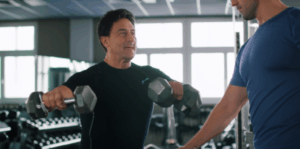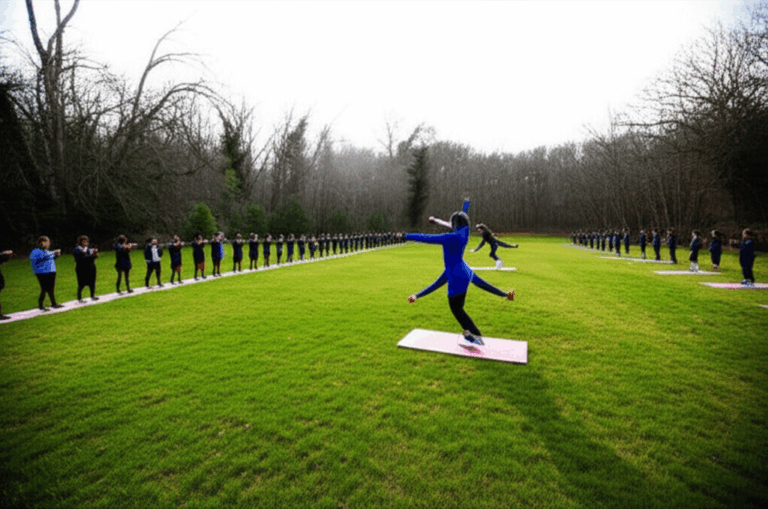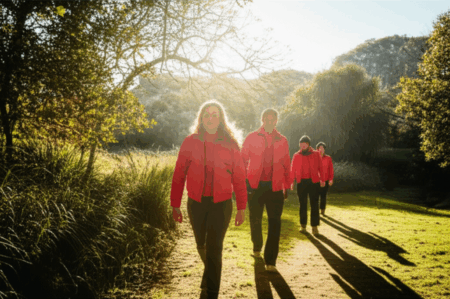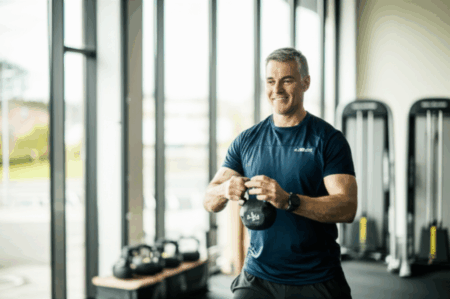As we navigate our sixties and beyond, maintaining strong bones and robust muscles becomes paramount for sustaining independence, enhancing mobility, and improving overall quality of life. The natural aging process often brings a decline in muscle strength, bone density, and balance, but this trajectory is not inevitable. Regular, targeted exercise can effectively counter these effects, helping to prevent falls, reduce the risk of fractures, and keep you energetic for daily activities. According to health experts, incorporating specific types of physical activity is key to “redefining how you age.”
This expert-approved routine focuses on foundational exercises that build strength, improve balance, and support bone health, ensuring you can continue to enjoy an active and fulfilling life. Always consult your healthcare provider before starting any new exercise program, especially if you have pre-existing medical conditions.
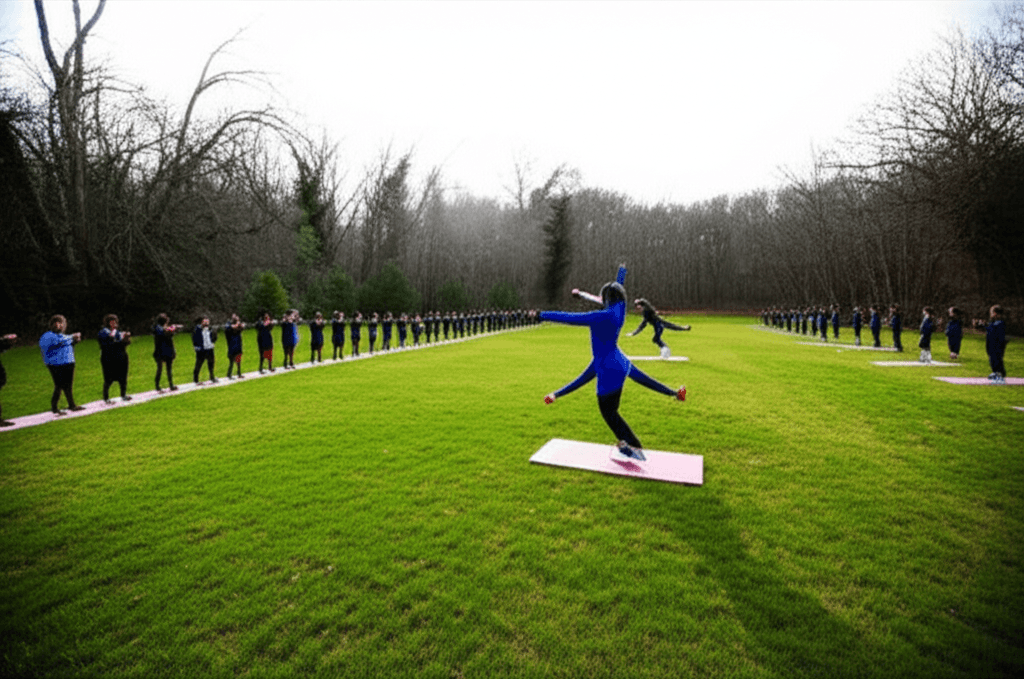
Understanding the Pillars of Senior Fitness
For individuals over 60, a well-rounded fitness plan should ideally incorporate four key types of exercise, as recommended by organizations like the American College of Sports Medicine (ACSM) and the Centers for Disease Control and Prevention (CDC): strength training, weight-bearing aerobic activities, balance exercises, and flexibility exercises. These components work synergistically to address the unique physiological changes associated with aging.
Strength Training: Building Muscle and Bone Density
Strength training, also known as resistance exercise, is crucial for preserving and building muscle mass and strength, which in turn helps to maintain bone density. As we age, muscle loss accelerates, particularly after menopause in women, impacting both muscle and bone health. Engaging in resistance training with free weights, resistance bands, or even your own body weight can signal your bones to produce added tissue, making them stronger.
Aim for at least two non-consecutive days of moderate-intensity strengthening activities per week, focusing on major muscle groups. Start with 8 to 12 repetitions for 2-5 sets, gradually increasing as you get stronger.
Recommended Strength Exercises:
- Chair Stand-Ups (Sit-to-Stands): This functional exercise strengthens your legs, improves balance, and supports bone health, mimicking a common daily movement.
- How to: Sit on a sturdy chair with arms crossed over your chest (or hands on lap). Lean slightly forward and push through your legs to stand up without using your hands. Slowly lower back down to sit with control. Repeat 8-12 times.
- Wall Push-Ups: An excellent way to build upper body strength, particularly in the chest and shoulders, without putting stress on joints.
- How to: Stand an arm’s length from a wall, facing it. Place your hands flat on the wall, shoulder-width apart. Bend your elbows to slowly lower your chest towards the wall, then push back to straighten your arms. Keep your body straight throughout. Repeat 10-15 times.
- Squats (Modified): Squats strengthen the muscles in your legs and buttocks. You don’t need to squat deeply for it to be effective.
- How to: Stand tall with feet shoulder- to hip-width apart. For balance, you can lightly rest your hands on a sturdy piece of furniture. Push your hips back and bend your knees as if sitting in a chair, keeping your back straight. Only squat until your thighs are parallel to the ground or to a comfortable depth. Push through your heels to return to standing. Aim for 10-15 repetitions.
- Biceps Curls (with light weights or resistance bands): Targets arm strength.
- How to: Sit or stand. Hold a light dumbbell in each hand or step on a resistance band, holding an end in each hand. Keep your elbows close to your sides and slowly curl the weights up towards your shoulders. Lower with control. Repeat 8-12 times for 1-2 sets.
- Shoulder Lifts/Lateral Raises (with light weights or resistance bands): Works shoulder muscles.
- How to: Sit or stand with a light dumbbell in each hand or resistance band. Start with arms down at your sides. Slowly raise your arms out to the sides, no higher than shoulder level, with a slight bend in your elbows. Lower with control. Repeat 8-12 times for 1-2 sets.
Weight-Bearing Aerobic Activities: Boosting Bone Health
Weight-bearing exercises are those where your bones support your body’s weight, such as walking, dancing, or climbing stairs. This impact against gravity stimulates bone growth, directly contributing to stronger bones in the legs, hips, and lower spine, and helping to slow bone loss. Low-impact options are recommended to minimize stress on joints.
Aim for at least 150 minutes of moderate-intensity aerobic activity per week, which can be broken into shorter 10-15 minute sessions throughout the day.
Examples of Weight-Bearing Aerobics:
- Brisk Walking: A simple, free, and highly effective way to improve bone health and cardiovascular fitness.
- Dancing: Engaging and fun, dancing provides a full-body weight-bearing workout.
- Stair Climbing: Works leg muscles and provides excellent weight-bearing impact.
- Elliptical Training: A low-impact option that provides a good cardiovascular and weight-bearing workout.
- Gardening: Many gardening tasks, like digging and raking, involve weight-bearing movements.
Balance Exercises: Preventing Falls
Balance naturally declines with age, making balance training a critical component of a senior fitness routine to prevent falls and related injuries. Exercises that improve coordination and stability are especially important.
Incorporate balance exercises at least three days a week, particularly if you are at an increased risk of falling.
Key Balance Exercises:
- Standing on One Leg: A straightforward exercise to improve stability.
- How to: Stand near a wall or sturdy chair for support. Lift one foot off the ground, balancing on the other. Hold for as long as comfortable, aiming for 10-30 seconds. Switch legs. Progress by trying to hold for longer or without support.
- Heel-to-Toe Walk: Improves balance and coordination.
- How to: Place the heel of one foot directly in front of the toes of the other foot, as if walking on a tightrope. Take slow, deliberate steps, focusing on your balance.
- Tai Chi: This ancient Chinese practice involves slow, graceful movements that significantly improve balance, coordination, and flexibility, and has been shown to slow bone loss. Many community centers offer classes.
Flexibility Exercises: Maintaining Mobility
Flexibility exercises help maintain and improve the range of motion in your joints, keeping muscles working efficiently and reducing stiffness. This is crucial for performing daily activities with ease.
Perform flexibility exercises at least two days per week, preferably after aerobic or resistance training, when your muscles are warm. Focus on sustained stretches for major muscle groups, avoiding jerky or bouncing movements.
Examples of Flexibility Exercises:
- Gentle Stretches: Target major muscle groups like hamstrings, quadriceps, shoulders, and chest. Hold each stretch for 15-30 seconds, breathing deeply.
- Yoga: Many yoga poses improve flexibility, posture, and balance, while also being a weight-bearing activity that uses your body weight for resistance. If you have osteoporosis, discuss safe modifications with an instructor, as some poses involving deep forward bends or twists of the spine should be avoided.
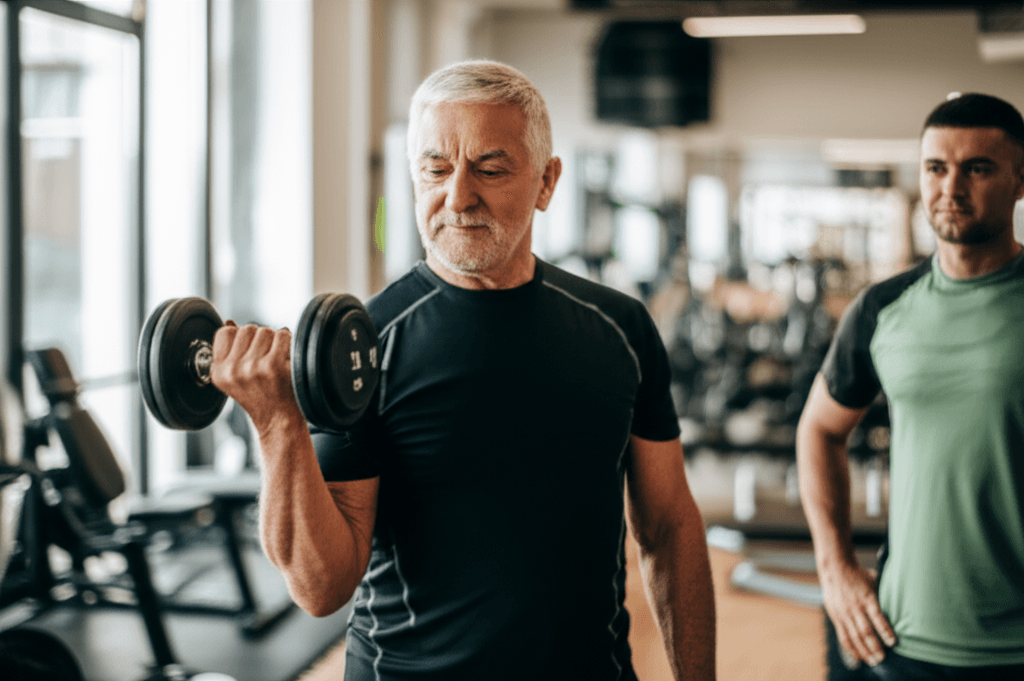
Important Considerations for Your Fitness Journey
- Consistency is Key: Rather than intense, sporadic workouts, prioritize consistency. Even short daily routines can make a significant difference.
- Listen to Your Body: It’s normal to feel some muscle soreness when starting, but stop immediately if you experience sharp pain, dizziness, or shortness of breath.
- Progress Gradually: Start with a comfortable number of repetitions and sets, and gradually increase as your strength and endurance improve.
- Vary Your Routine: Incorporating different exercises keeps your workouts interesting and challenges your muscles and bones in various ways.
- Stay Hydrated: Drink plenty of water before, during, and after exercise.
- Seek Professional Guidance: If you’re unsure about proper form or have specific health concerns, consider working with a physical therapist or a certified personal trainer experienced in working with older adults. They can help tailor a routine to your individual needs and capabilities.
By embracing this balanced and consistent fitness routine, you can effectively strengthen your bones and muscles, improve your balance, and significantly enhance your overall health and well-being well into your golden years.


